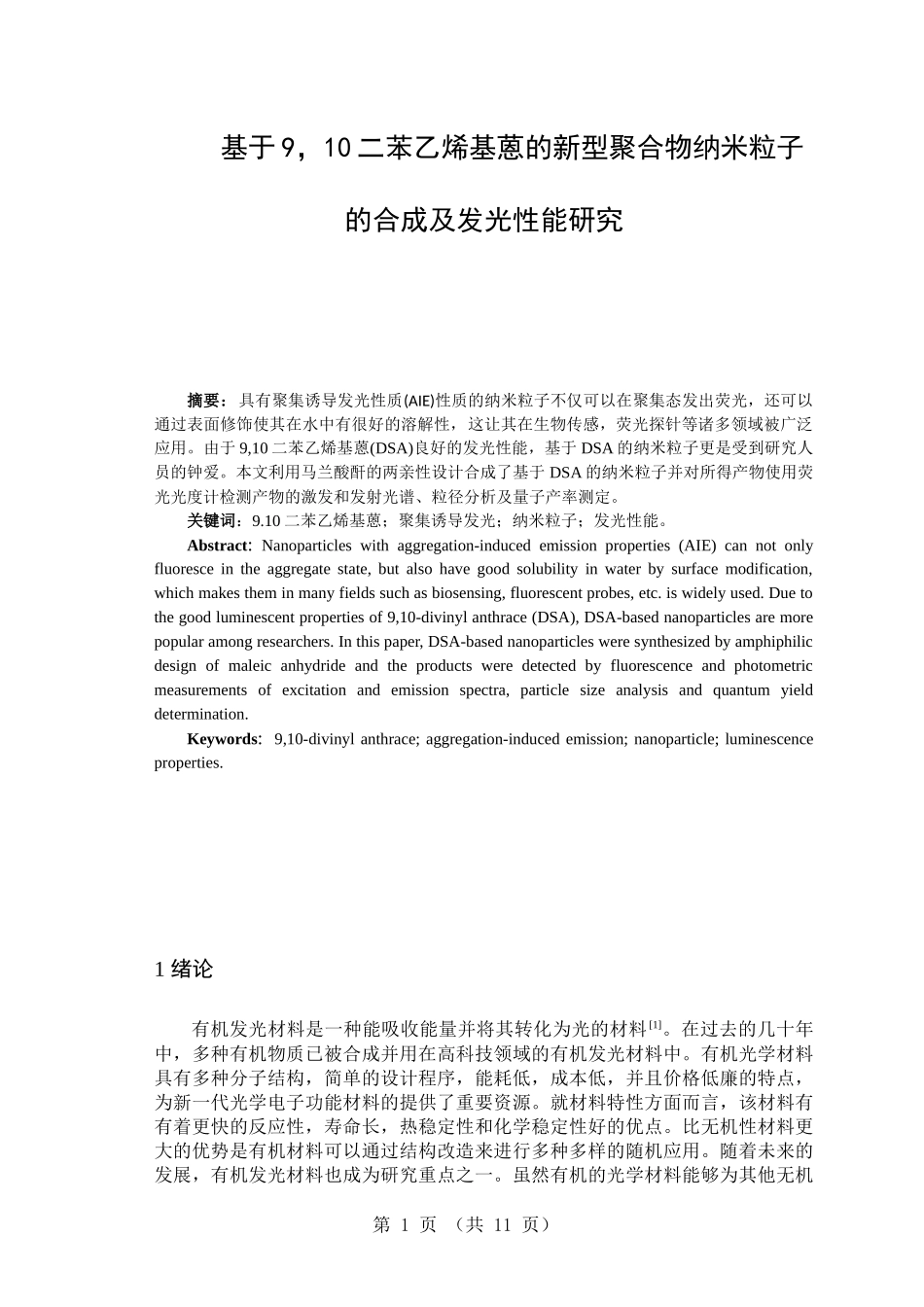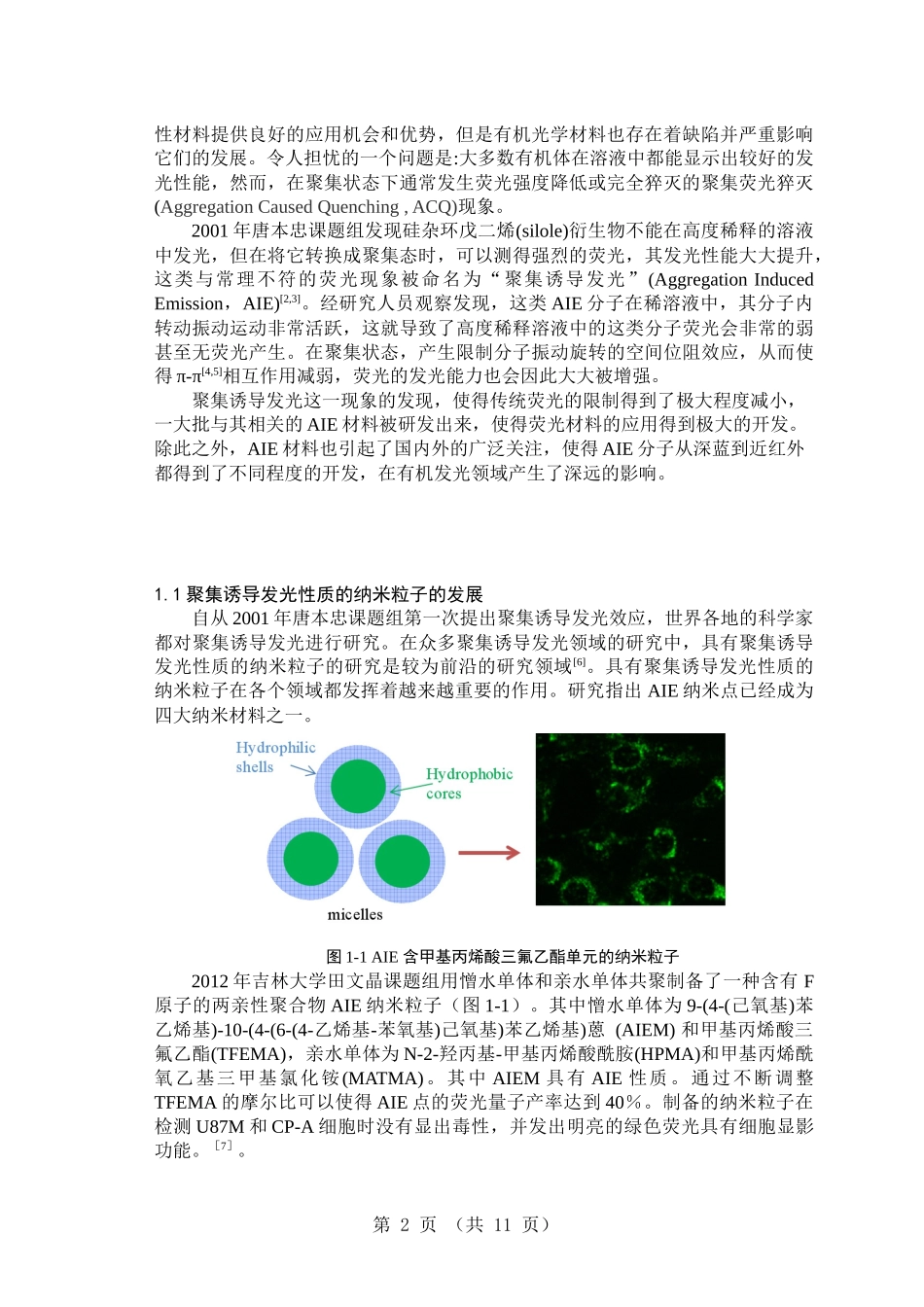第 1 页 (共 11 页)基于 9,10 二苯乙烯基蒽的新型聚合物纳米粒子的合成及发光性能研究摘要:具有聚集诱导发光性质(AIE)性质的纳米粒子不仅可以在聚集态发出荧光,还可以通过表面修饰使其在水中有很好的溶解性,这让其在生物传感,荧光探针等诸多领域被广泛应用。由于 9,10 二苯乙烯基蒽(DSA)良好的发光性能,基于 DSA 的纳米粒子更是受到研究人员的钟爱。本文利用马兰酸酐的两亲性设计合成了基于 DSA 的纳米粒子并对所得产物使用荧光光度计检测产物的激发和发射光谱、粒径分析及量子产率测定。关键词:9.10 二苯乙烯基蒽;聚集诱导发光;纳米粒子;发光性能。Abstract: Nanoparticles with aggregation-induced emission properties (AIE) can not only fluoresce in the aggregate state, but also have good solubility in water by surface modification, which makes them in many fields such as biosensing, fluorescent probes, etc. is widely used. Due to the good luminescent properties of 9,10-divinyl anthrace (DSA), DSA-based nanoparticles are more popular among researchers. In this paper, DSA-based nanoparticles were synthesized by amphiphilic design of maleic anhydride and the products were detected by fluorescence and photometric measurements of excitation and emission spectra, particle size analysis and quantum yield determination.Keywords: 9,10-divinyl anthrace; aggregation-induced emission; nanoparticle; luminescence properties.1 绪论有机发光材料是一种能吸收能量并将其转化为光的材料 [1]。在过去的几十年中,多种有机物质已被合成并用在高科技领域的有机发光材料中。有机光学材料具有多种分子结构,简单的设计程序,能耗低,成本低,并且价格低廉的特点,为新一代光学电子功能材料的提供了重要资源。就材料特性方面而言,该材料有有着更快的反应性,寿命长,热稳定性和化学稳定性好的优点。比无机性材料更大的优势是有机材料可以通过结构改造来进行多种多样的随机应用。随着未来的发展,有机发光材料也成为研究重点之一。虽然有机的光学材料能够为其他无机第 2 页 (共 11 页)性材料提供良好的应用机会和优势,但是有机光学材料也存在着缺陷并严重...












